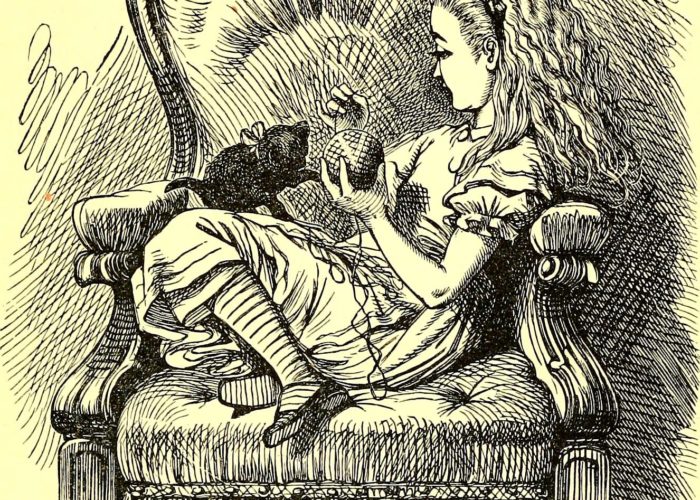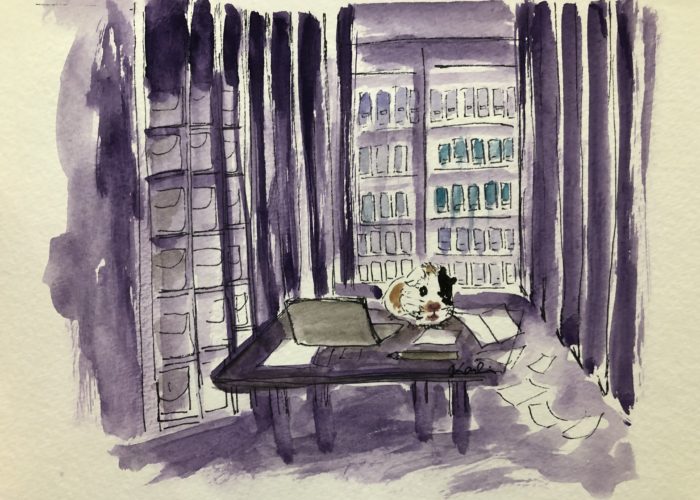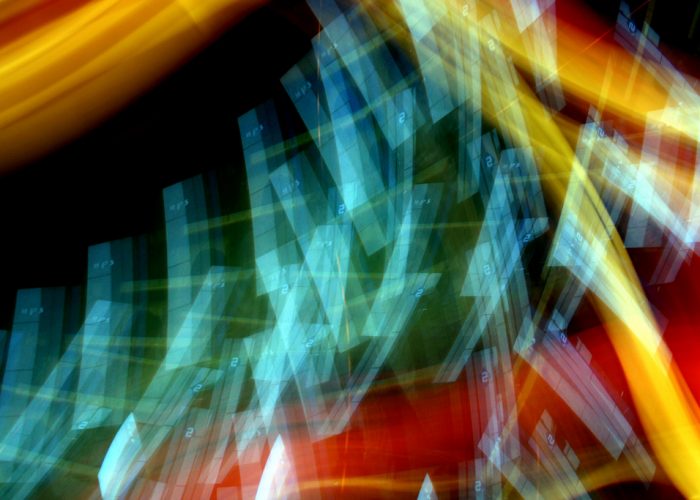The current technological moment is perhaps best defined by a recent collective and critical awareness of the ways technology shapes our lives and practices both explicitly and implicitly. These technologies are so embedded in our daily practices that they are no longer ‘new’ or ‘surprising’, but commonplace—an assumed facet of modern life. In this moment where we are so deeply entwined with our technologies, it is important to evaluate and reflect on the affordances and challenges of digital technologies in the context of our curriculums, classrooms, and research. Unprecedented access to a wealth of multimodal information about the world has deepened university curricula in ways unimaginable only a decade ago, yet it has also blurred the boundaries of reality, giving rise to a cultural climate in which the very notion of truth has come into question. In his now classic schema on the intellectual and ethical development of college students, William Perry proposed that students evolve from dualistic thinking to multiplicity, then to relativism and, finally, to making commitments to their ideas (Perry 1970). Considered through the lens of this schema, our technological moment is emblematic of a state of relativism, where knowledge, truth, and reality are viewed as relative to the speaker’s own positionality. And it is in this moment, in this climate, that we are asking our students to actively participate in the construction and production of knowledges—a process that realizes the profound power and reach of technology, yet is also in tension with students’ vast access to information and computing power. So, while the majority of students have enough computing power in their pockets to research, create, and publish a variety of media with incredible quality, this power has become overwhelming to some, leading to fractured or distant relationships with others and confusion about what constitutes a reality they can trust, engage with, and contribute to. As the scale of information around the globe increases exponentially, and with it the ease of access to that information, it is our job as educators to guide students as they grapple with the realities of a hyper-connected world—a unique challenge, as many educators are grappling with their place in this new world themselves.
Issue 13 of the Journal of Interactive Technology and Pedagogy features a series of articles that can help us, as educators, think through how we utilize the affordances of digital technologies, while also revising our pedagogical practices to respond effectively to the associated challenges. Although Issue 13 is a General Issue and the topics covered by these articles are diverse, they remain centered around three themes: using digital content to broaden and deepen materials for consumption, using digital tools to contextualize relationships and expand communicative methods, and developing digital literacy across the curriculum. Each piece on its own invites the reader to consider digital pedagogies as essential to students’ educational experiences; taken together they highlight the benefits students can derive from engaging critically in both the consumption and production of digital media.
The Issue begins with David Haeselin’s essay, “Beyond the Borders of the Page: Mapping The Brief Wondrous Life of Oscar Wao.” In it, he describes a course in which he invites students to construct maps of both the characters’ and their own lived experiences, drawing on the spatial narrative detailed in Junot Díaz’s Pulitzer Prize-winning novel. Where the novel draws the reader’s attention to the porousness of national, linguistic, stylistic, and generic borders, the practice of mapping is itself an exercise in drawing and redrawing points, lines, and polygons. In this context, Haeselin argues that the process of map making allows students to engage more deeply in the experiences of Junot Díaz’s characters and, correspondingly, draw connections between the characters’ perspectives and their own. By implementing multi-modal deep mapping projects in undergraduate core curriculum courses, Haeselin invites us to consider the potential of the digital humanities to help students from across institutional disciplines see the world in novel ways.
Kelly Josephs articulates a different perspective concerning the relationship between multi-modal production and the classroom in her article, “Teaching the Digital Caribbean: The Ethics of a Public Pedagogical Experiment.” In this piece, Josephs discusses both the methodology of developing an interdisciplinary course about digital humanities (“The Digital Caribbean,” at the Graduate Center at the City University of New York) as well as the challenges she faced in teaching such a course. By focusing on the ethical considerations of designing this course as well as the impact that a single course can have, Josephs encourages us to reflect on the broader implications of all our teaching, both digital and analogue (a division that is increasingly nonexistent). While both Haeselin’s and Joseph’s articles chronicle interdisciplinary courses, and both draw on digital technologies as a means to enhance students’ experience of the content, Josephs is using these methodologies at the graduate level rather than the undergraduate, and exploring the ethical implications of requiring public-facing work as a part of a graduate education. Josephs invites us to consider how both the collection and production of digital work in an educational setting has broader impact not only for students, but the communities being studied. Throughout the article, she returns to this theme: exploring what it means to “work publicly with graduate-level research on the Caribbean in academia, particularly with students who have set ideas about their own personal and intellectual relationships to both digital technology and the region.”
The theme of exploring one’s intellectual relationship with digital technology continues in Trevor Hoag’s article, “From Addiction to Connection: Questioning the Rhetoric of Drugs in Relation to Student Technology-Use,” where Hoag discusses how educators, unsure of how to describe students’ relation to technology, typically employ the rhetorics of drugs and addiction by claiming their students are “hooked” on technology. This assessment prompts educators to adopt restrictive in-class device-use policies and creates an environment where technology is seen as an impediment to critical thinking. In an effort to dispel some of these negative assessments, Hoag asks his students to describe themselves and their relation to different media platforms. While some students did describe themselves as “addicts,” many students highlighted the importance of connection in their lives in terms that reflected a healthier attitude about the use of technology. Hoag suggests that, at the very least, students and teachers need to work together to create a new narrative around technology use in the classroom that captures these alternative assessments.
In a similar vein, the article, “Video Essays and Virtual Animals: An Approach to Teaching Multimodal Composition and Digital Literacy” by Christina Colvin explores how the design of social media platforms and video games influence one’s understanding of the world by persuading players to act in certain ways during gameplay. Colvin assigns students a video essay project that requires them to analyze how video games represent nonhuman animals. The project asks students to engage with the architectural designs of video games to recognize how they are constructed to achieve certain rhetorical ends by representing (in this case) nonhuman animals as related to players in particular ways. Through the recognition that game design can encourage players to adopt certain behaviors and understandings, students begin to understand that other artifacts, including texts, are constructed to achieve rhetorical ends as well. As such, immersive technology can be used to enhance the classroom experience for students.
If immersive technology can be used to improve students’ classroom experiences, it can also be used to improve students’ written work. In “Using Digital Rhetoric in a Multimodal Assignment to Disrupt Traditional Academic Writing Conventions in a First-Year Writing Classroom,” Melanie Gagich suggests that educators use digital rhetoric as an analytic tool to critique traditional writing assignments. She argues that students’ anxiety about writing academically for college audiences results from students framing it as “writing to the teacher.” This construction of a particular kind of audience hinders students’ abilities to write academically. Gagich argues that using digital rhetoric as a framework creates an environment for multimodal composition practices, and this new environment provides opportunities for students to engage with “real” audiences. Structuring assignments this way, Gagich argues, promotes student agency and teaches them how to effectively integrate rhetorical strategies that connect with real audiences.
Building on this theme, Stadler and McDermott highlight the importance of information literacy as a key outcome of higher education and writing instruction. In their article, “Advancing Information Literacy in a Semester-Long Library Instruction Course: A Case Study,” they investigate the efficacy of explicitly teaching Information Literacy (IL) through teaching internet research strategies at the lower undergraduate level. Where they argue that IL is a critical component of higher education, and a central tenet of librarianship, they also acknowledge that instruction in IL and internet research is often implied rather than explicit in higher education. Drawing on their experiences in teaching such a course at LaGuardia Community College and using ePortfolio as the primary platform for student production of work, they highlight both the successes and the challenges of teaching IL. This piece serves as both a guide and a reflection on the importance of IL in a quickly changing and evolving world.
Taken together, these articles invite us to consider the ways that we can prepare students for the technological moment they have inherited. The enterprise of education is grappling with a constantly evolving technological landscape that mirrors society’s larger struggle to balance the benefits of technological innovation with the challenges such rapid innovation poses. With this in mind, as well as with the recognition that there are ethical implications to the kinds of technology we employ inside and outside of the classroom, this issue of JITP presents an opportunity for each of us as educators to share our knowledge and experiences with the goal of refining our pedagogical practices to reflect the needs of our current techno-cultural realities. So, as we define and redefine the relationships between technology, the classroom, and the societies in which these structures exist more broadly, we take these essays as an opportunity to iterate on the methods that shape not only our classrooms and students, but the societies and global publics we enter into every day.







